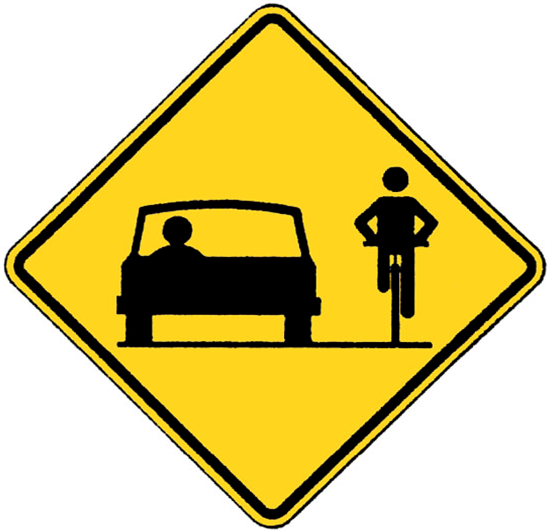
On page 16 of the Virginia driver’s manual it states that when approaching or passing a person riding a bicycle, you should pass three feet to the left of the rider. As I ride, I see plenty of ambiguous “share the road” and “3 feet please” signs. Fortunately, most drivers these days seem to get it right: for example, on two-lane country roads, passing with the driver’s tires on or near the double yellow line works well. Three feet is roughly an arms reach, so assuming road conditions allow me to ride near the white line, the driver can line up their shoulder with the center lines and be virtually assured of giving me more than the intended three feet.
Still, too many drivers go way overboard, or way over the line, literally. I don’t know exactly what motivates them, but they entirely cross the double yellow lines in order to pass me. Not only is that a moving violation, it is also incredibly dangerous. My assumption is that they are executing this maneuver with so much blatant overkill because they don’t want to hit a cyclist and have the wrong idea of how much room is needed! They think that giving cyclists a wide, wide berth makes them a safe driver.
But the result is quite the opposite. I fear for the safety of the drivers of unseen oncoming cars and cyclists. Somehow being alert to my presence has actually distracted them from other, potentially more important concerns. Three or four feet would have been an appropriate response, but now they are out of position.
The danger lies in what we don’t see or focus on! And that is as true in project management as it is in driving and cycling.
You see, one of the things that our Spitfire Project Management System offers is “management by exception.” The system helps clients focus on identifying and handling cases that deviate from the norm. Good examples include:
- change orders that exceed a percent of the original contract, or
- when contingency funds are depleted or
- unaddressed compliance issues or
- due dates approaching or having past.
In fact, right out of the box there are alerts for about two dozen scenarios to which a user can subscribe, and those alerts can definitely be powerful and helpful tools. But here’s the catch: all too frequently users end up subscribed to too many alerts! Like those drivers before, they go too far. I was helping one of our clients this past week, and he had hundreds of alerts potentially waiting for his attention. Instead, of course, they were all being ignored.
Humans just aren’t good at processing that many demands on our attention. If not properly implemented, a well-intended attempt at management by exception just becomes more noise and distraction. That is why we suggest “how about just three” of those scenarios. Starting with three helps you stay focused. In all things, it is better to keep exceptions at a level that your alertness can handle.
Tweet